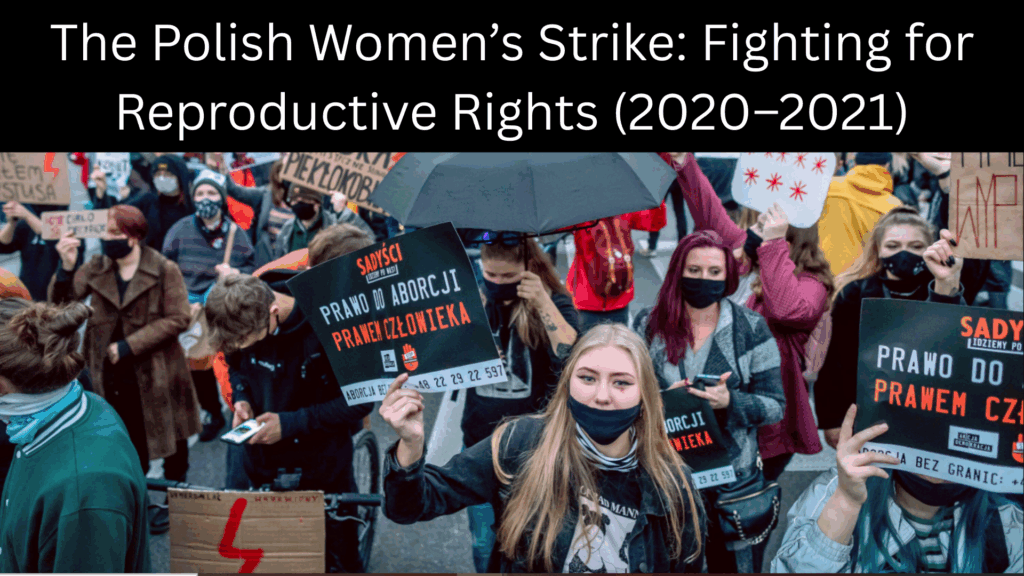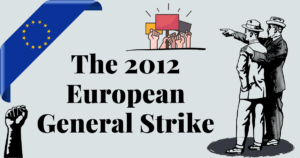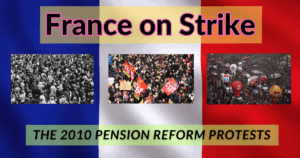In this post you are going to get informed about The Polish Women’s Strike: Fighting for Reproductive Rights (2020–2021), read and know all the insights.
The Polish Women’s Strike: Fighting for Reproductive Rights (2020–2021)
In 2020 and 2021, the Polish Women’s Strike movement, which was started in 2016, gained significant traction as a protest against Poland’s more stringent abortion laws.
The protests, which were triggered by a Constitutional Tribunal ruling that limited access to abortion, drew millions of participants from across the country. A powerful symbol of resistance to the nation’s declining reproductive rights and broader democratic liberties, the Polish Women’s Strike (Ogólnopolski Strajk Kobiet) attracted national attention.
In this post we have discussed in detail what triggered the launch of The Polish Women’s Strike (2020-2021), its implications, and its present status has also been provided here.
Context of Polish Women’s Strike
When the Constitutional Tribunal ruled on October 22, 2020, that abortions carried out in cases of severe prenatal abnormalities were unethical, it effectively eliminated one of the few legal justifications for abortion that remained in Poland. This ruling, which was influenced by the ruling Law and Justice Party (PiS), caused immediate outrage.

The ruling was viewed as proof of the government’s increasing power over the courts and contempt for public opinion, in addition to being a blatant violation of women’s rights. The decision sparked widespread protests in Poland, with women taking to the streets in over 160 cities and towns.
Large-scale protests erupted across Poland in response, with the country witnessing its largest rallies since the 1989 pro-democracy revolution. One of the goals of the movement was to defend women’s rights, including access to abortion, sex education, and contraception.
More Details: Get Here
Course of Polish Women’s Strike
The All-Poland Women’s Strike, which was co-founded by activists Marta Lempart and Klementyna Suchanow, organized the women’s demonstration, and the movement quickly gained popularity. Protesters used the lightning bolt emblem and the phrase “Wypierdalać” (“Get the f*** out”) to express their displeasure with the government and the Catholic Church’s influence over public affairs.
Protesters employed a range of strategies, such as marches, sit-ins, and disrupting church services, in more than 400 towns and cities. The movement’s decentralized structure allowed for widespread participation and adaptability, making it a potent force against official persecution.
Government Response and Legal Repercussions
Police brutality and arrests were part of the protesters’ significant official suppression. In response to the demonstrations, the government tried to use the police and the legal system to crush the opposition.
Protest organizers Lempart, Suchanow, and Agnieszka Czerederecka were charged with organizing protests during the COVID-19 pandemic, a crime that carries a maximum sentence of eight years in prison. Despite these efforts, the protests continued, demonstrating the people’s resilience and determination to stand up for democratic principles and reproductive rights.
Implications of the Polish Women’s Strike
The Polish Women’s Strike garnered international attention and the support of human rights organizations and activists worldwide. The campaign brought attention to the limitations on access to abortion as well as Poland’s broader issues with women’s rights and the rule of law.
The movement also made clearer the broader issues of judicial independence, the Catholic Church’s political role, and the deterioration of Polish democratic institutions. It also sparked similar movements in other countries where the rights of women and men were being challenged.
Future Prospects
Poland is still fighting for reproductive rights as of 2025. The first protests were successful in organizing a sizable portion of the populace and raising awareness of the issue on a global scale, even though they did not immediately result in the repeal of the abortion ban.
The movement has also impacted political discourse; the ongoing discussions in the Polish parliament about easing restrictions on abortion show both a change in public sentiment and the possibility of legislative action. The Polish fight for reproductive freedom is far from over, but it has set the stage for future resistance and has come to represent perseverance and hope for women’s rights activists around the world.
Thanks a lot for reading this post on The Polish Women’s Strike: Fighting for Reproductive Rights till the end.









